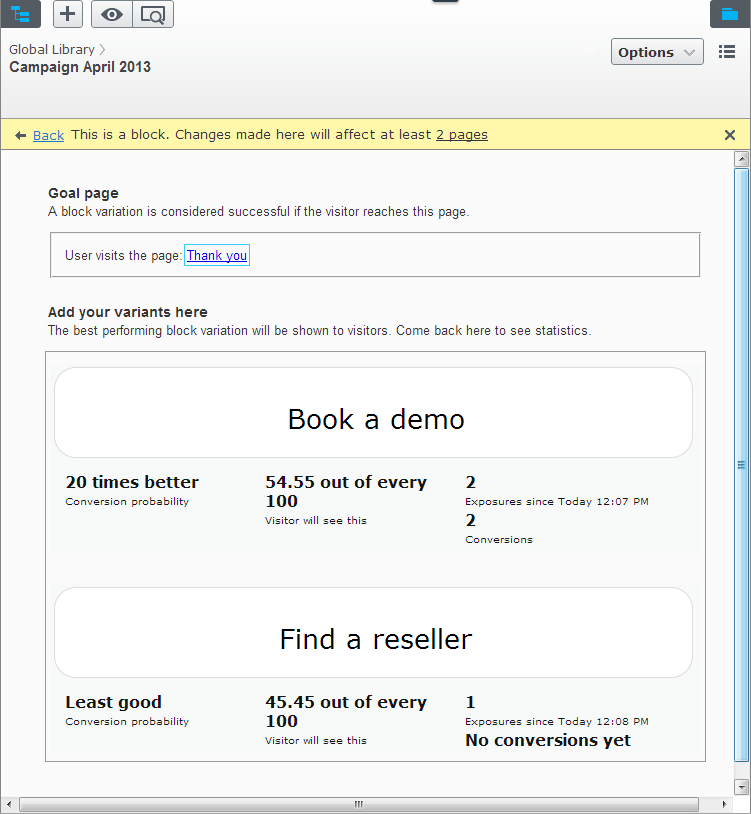 Self-Optimizing Block
Self-Optimizing Block
Note: Episerver Self-Optimizing Block is an add-on for the Episerver Digital Experience platform. It requires a separate installation, but no additional license. Contact your system administrator to find out more. See Episerver World for technical information.
Self-Optimizing Block is a multivariate testing add-on that randomly displays a block variant to visitors. You monitor the progress of the test. The variant that generates the most conversions is the one that appears most over time. See also A/B testing, which provides a more functionally-rich way of gauging site visitor reactions to content versions.
After you install the add-onA plug-in or module, developed by Episerver or its partners, to extend the capabilities of Episerver. Add-ons are available from the Episerver Add-on Store inside Episerver., a self-optimizing block type is available when you create new Blocks.
Creating content for multivariate testing
- Select New Block in the editorial interface.
- Select the Self-Optimizing Block type to create content for multivariate testing.
- Select a goal page for conversion, such as a confirmation page after posting a form.
- Add the block variants you want to include, preferably 2-4 variants with similar content.
- Publish the self-optimizing block.
- Drag the self-optimizing block you created to a landing page and publish it.
A self-optimizing block is indicated with a specific icon in edit view.
Note: You cannot track external links. For example, a conversion is not registered if the conversion page has a shortcut link to an external Web page.
Analyzing statistics
Statistics are counted only in live view, and automatically show the most successful block over time. The Self-Optimizing Block renders the best performing block variant in edit view.
Exposures are the number of page views, and Conversions are the number of visitors reaching the goal page.
Sorry about that
Why wasn't this helpful? (check all that apply)
Thanks for your feedback.
Want to tell us more?
Send an email to our authors to leave your feedback.
Great!
Thanks for taking the time to give us some feedback.
